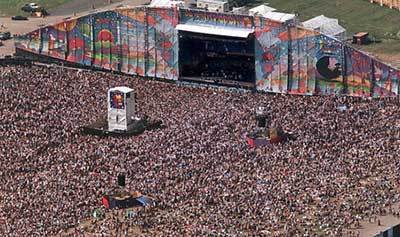In sociology, counterculture refers to a libertarian contestation movement that emerged in the 1960s in the United States.
It represented a movement of rebellion and dissatisfaction that broke with various patterns by radically contesting the behaviors of the dominant culture. However, it is worth remembering that it has a peaceful character.
It had a social, artistic, philosophical and cultural content, and took a stand against values disseminated by industry and the cultural market.
This significantly changed the values and behaviors of this era, especially in young people, the great leaders of the movement.
The culture of this movement is related to the marginal, alternative and underground culture and is named for its position against the dominant culture, the erudite culture.
Abstract
The counterculture represented a major movement of values contestation that emerges in the 50s in the United States, with the Beat Generation. It had its heyday in the 1960s where young people represented the largest portion of the movement.
In order to warn of some values disseminated by industry and the media, the beat generation was of great importance at this early stage.
Precursors of the counterculture movement, they were young intellectuals who valued simplicity, love, and nature as a way of making freedom their strongest feature.
They warned that anti-consumerism would lead to a liberation of the spirit, the struggle for peace and even the valorization of minorities.
Against imposed capitalist values and conservatism, they proposed a free life with freedom of relationships, be loving and sexual.
This innovation of values occurred with the approximation of oriental religions (Buddhism, Hinduism, etc.) as well as new habits, for example, vegetarianism and the use of psychedelic drugs.
With this, they sought the liberation of a society that, according to them, was being swallowed up by capitalist standards and values mainly with the growth of the media.
Based on these goals, the hippie movement peaked in the 1970s by questioning these imposed norms. And in the same way, proposing a change of values and behaviors that would lead to freedom of thought and deeds.
This is how hippies engaged politically and freed themselves from prevailing conservatism, totalitarianism and traditionalism, driven by cultural, artistic, philosophical and social movements.
The idea was that the motto “peace and love” or “make love, not make war” reflect a community life of fighting peace. Moreover, equality and the ending of injustices were other goals of the movement.
It was thus that they left the comfort of their homes to live in more “open” societies (naturist and nature-enhancing) through a nomadic lifestyle.
The hippies’ clothes were their own and averse to the “fads” imposed by the cultural industry. They wore bell-bottoms, sandals, ragged multicolored clothes. In addition, long hair was chosen for both sexes.
Even though it originated in the United States, counterculture was rapidly spreading to countries in Latin America and Europe.
Musical movement
Music was one of the most important tools for contesting this libertarian movement, with figures such as Janis Joplin, Jimi Hendriz, Bob Marley, Jim Morrison, etc. The mixing and emergence of new musical genres was an important feature of the time.

Woodstock Festival, 1969
The emergence of festivals was one of the important manifestations of which the “Woodstock Festival”, held in August 1969 and considered a milestone of the counterculture musical movement, deserves special mention.
Counterculture in Brazil
In Brazil, counterculture movements that were influenced by the US began in the 1960s, with a youth that is beginning to engage politically.
With the industrialization of Brazil, more and more, young people gathered in student movements to deny various aspects and behaviors of the dominant culture.
The emergence of bossa nova and the consolidation of Brazilian Popular Music (MPB) represented movements associated with counterculture in Brazil, in addition to rock’n’roll.
Everyone sought change in society’s values, and just as in the United States, they preached peace, harmony and equality.
Also in the cinema and other artistic forms the counterculture movement was present in Brazil. We highlight Cinema Novo, the engaged culture of the Popular Centers of Culture and the Tropicalismo movement. They all had a critical view of the country’s political and social situation.
Counterculture Examples
Examples of counterculture-related movements include:
- Beatniks Movement
- Hippie movement
- Punk movement
- Anarchist Movement

